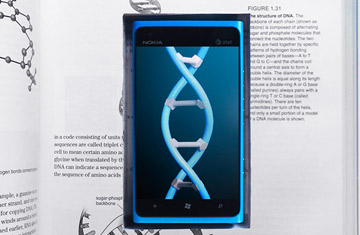
Even though the vast majority of students own cell phones--something like 80% by eighth grade--more than half of schools prohibit the use of any mobile device. And yet a few pioneering administrators are considering a new approach called BYOT--bring your own technology. BYOT offers an elegant solution to an old problem. Instead of outlawing kids' devices, BYOT policies allow kids to take their phones or tablets to class and use them not just to Instagram stupid photos from Friday night but also to engage with one another in classroom lessons.
To many parents who use a cell phone to juggle the obligations of work and family and Words with Friends, school bans on phones can seem ridiculous. Even a first-generation iPhone is more powerful than some computer labs' ancient desktops. Putting a new laptop at every desk can cost hundreds of dollars per student, so tapping into the tech that kids already have seems like a no-brainer. Why can't schools turn those devices into learning tools?
A small but growing number of schools are giving it a try. Some districts--such as those in Meriden, Conn.; Allen, Texas; and Hanover, Pa.--have developed BYOT policies that allow kids not only to take their mobile devices to school but also to access school networks. The districts--all in relatively wealthy enclaves where a new iPad causes no stir--enforce strict rules. Kids can use devices only with a teacher's permission; activating a screen during tests can be grounds for expulsion.
Companies like Avaya and HP, as well as many smaller players, are racing to develop in-classroom apps for mobile devices. One idea is that a teacher presenting a math problem can ensure that every student has responded and then compare the answers. It's not as convoluted as it sounds. At many colleges, professors are using clickers--remote-control-like devices that let students answer questions from their seats--to gather real-time information about whether students are comprehending lessons.
Cell phones are the easiest fit for BYOT. Even for kids from poor neighborhoods, cell phones have become nearly biological appendages. Ask 10th-graders about, say, mitochondria, and they can deploy a phone to give an answer in seconds. Do you really expect them to walk over to that dusty shelf with the Britannicas?
Many parents want their kids constantly connected for safety reasons, and, of course, teachers and administrators have their own devices. Teachers look away when kids pull phones from backpacks during lunch, but the classroom remains a contested arena. That's partly because school officials fear getting caught up in lawsuits. "The technology has great promise, but it has created huge legal issues for school districts," says Daniel Domenech, executive director of the American Association of School Administrators. "Some kids use their phones to bully students or to sext or make inappropriate phone calls."
One concern is that schools could run afoul of the Children's Internet Protection Act (CIPA), which President Bill Clinton signed in 2000. The law says schools can lose federal funding if they don't adequately monitor the online activities of minors. CIPA predated smart phones and social networking, but administrators must hold to its letter. If, say, a student tweets something from a locker room that is gross and compromising, cops could arrive.
